|
|
 |
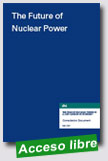 |
The
future of nuclear power: the role of nuclear power in a
low carbon UK economy
UK-DTI
– Department of Trade and Industry, May 2007, 207p.
Energy is
essential to almost every aspect of our lives and the
success of our economy. The
Government’s
Energy White Paper highlights the challenges we face in
addressing climate change
and ensuring
security of energy supplies. The White Paper sets out
the Government’s new
international
and domestic energy strategy to address
|
|
these
long-term energy challenges and
deliver
our goals. This is a consultation about nuclear power
generation. Its purpose is to provide the Government
with information which will help it to take the decision
whether or not to allow energy companies to build new
nuclear power stations in this country.
The Government
wants to be able to make a decision on new nuclear power
stations this
year for three reasons: 1. Over the next two decades, a
significant number of the power stations
which
currently generate our electricity – both nuclear and
those that burn fossil fuels like coal and gas – are
scheduled to close and need to be replaced. 2. Climate
change, which is linked to man-made emissions of carbon
dioxide from fossil fuel based energy sources, is
accelerating. 3. Domestic supplies of fossil fuels,
notably oil and gas from the North Sea, are running down
and the UK is becoming increasingly dependent on
imported
fossil fuels.
http://www.dti.gov.uk/consultations/page39704.html
http://www.dti.gov.uk/files/file39197.pdf
|
 |
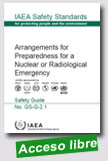 |
Under the Convention on Assistance in the Case of a
Nuclear Accident or Radiological Emergency, one function
of the IAEA is to collect and disseminate to States
Parties and Member States information concerning
methodologies, techniques and available results of
research relating to response to such emergencies. The
primary objectives of the Safety Guide are to provide
guidance on preparedness
|
|
|
 |
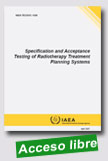 |
This publication serves as a protocol to be used by
both manufacturers and users for the specification and
acceptance testing of radiotherapy treatment planning
systems (RTPSs). Recommendations are provided in this
report for specific tests to be performed at the
manufacturing facility and acceptance tests to be
performed at the radiotherapy hospital. The protocol
uses the IEC 62083 standard as its basis for defining
the specifications
|
|
acceptance tests. The analysis of algorithm site
testing does not only test for consistency with the
factory type tests but will also help the user at the
hospital to understand how well the algorithm works and
what kind of results should be expected.
http://www-pub.iaea.org/MTCD/publications/PDF/te_1540_web.pdf |
 |
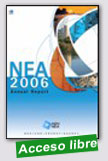
|
NEA
Annual Report 2006
NEA,May 2007, 52 p.
The NEA programme of work covers a
very full range of topics, with nuclear safety and
regulation as the top priority in the Agency’s
2005-2009 Strategic Plan. In addition, 15 international
joint projects (see page 28 for details) are conducted
under NEA auspices on nuclear safety matters. In a
longer-term perspective, the Generation IV International
Forum (GIF) continues to pursue its activities with
far-reaching goals in mind, while also paying close
attention to non-proliferation issues.
|
|
An important new development in 2006
was when the NEA was requested to provide the Technical
Secretariat functions of Stage 2 of the Multinational
Design Evaluation Programme (MDEP). The MDEP was set up
to share the resources and knowledge accumulated by
national nuclear regulatory authorities during their
assessment of new reactor designs, with the aim of
improving both the efficiency and the effectiveness of
the process. The main objective of Stage 2 is to
identify common regulatory practices and regulations
that enhance the safety of new nuclear reactor designs.
Ultimately this is expected to lead to a convergence of
codes, standards and safety goals in the participating
countries. Such convergence would help streamline many
of the steps involved in bringing new plants online in
the context of competitive markets worldwide, while at
the same time maintaining the highest levels of safety.
http://www.nea.fr/html/pub/annual-report.html
http://www.nea.fr/html/pub/activities/ar2006/AR-2006.pdf |
 |
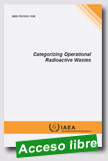
|
The primary objective of this publication is to improve
communication among waste management professionals and
Member States relative to the properties and status of
radioactive waste. This is accomplished by providing a
standardized approach to operational waste
categorization using accepted industry practices and
experience.
|
|
http://www-pub.iaea.org/MTCD/publications/PDF/te_1538_web.pdf
|
 |
|
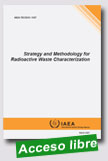
|
|
which are not compliant with the waste
acceptance criteria for disposal, thereby adversely
impacting the repository. The information and guidance
included in this publication corresponds to recent
achievements and reflects the optimum approaches,
thereby reducing the potential for error and enhancing
the quality of the end product.
http://www-pub.iaea.org/MTCD/publications/PDF/te_1537_web.pdf
|
 |
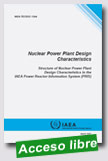 |
Nuclear
Power Plant Design Characteristics: Structure of Nuclear
Power Plant Design Characteristics in the IAEA Power
Reactor Information System (PRIS)
IAEA, 2007, 40 p.
The Power Reactor Information System (PRIS)
is a comprehensive data source on nuclear power reactors
in the world. It includes specification and performance
history data of operating reactors as well as of
reactors under construction or being decommissioned. The
nuclear power plant design characteristics represent a
fundamental part of
|
|
the PRIS database. They provide important information on the main systems
and components and can provide a comprehensive picture
of unit design, technology and system configuration. The
characteristics can also be used as basic criteria to
group reactors with similar or identical design features
for operational performance analysis. The aim of this
publication is to provide guidelines for PRIS data
providers and to detail information about PRIS design
characteristics for those using PRIS data for
performance analysis, benchmarking or just as a reliable
source of technical information related to nuclear power
plants.
http://www-pub.iaea.org/MTCD/publications/PDF/te_1544_web.pdf
|
 |
|
|
|
